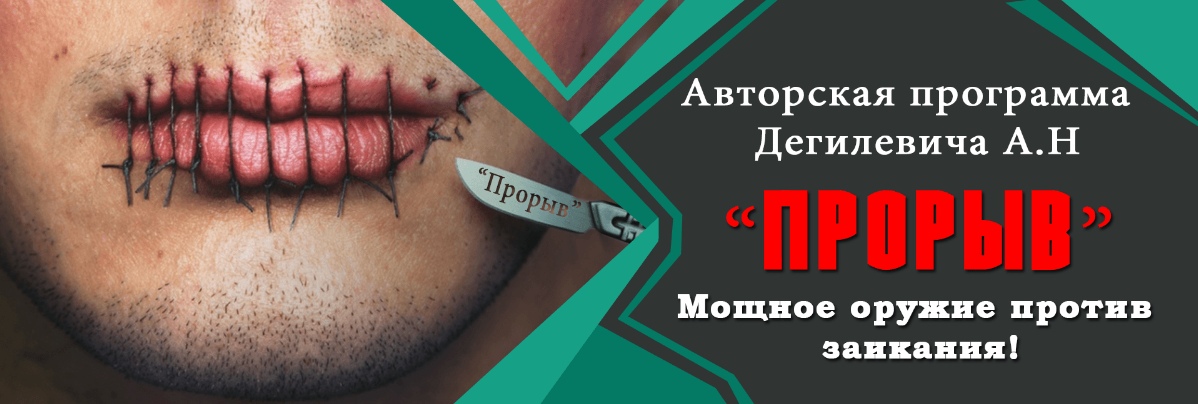Hello, my name is Alexander Degilevich. I teach a course on stuttering according to my author’s method. Unlike other specialists, I have stuttered for 16 years and I know the problem from the inside. Stupor, clamps, word substitution and logophobia were my reality.
Speech therapists and psychologists have not solved the problem.
More than 10 years ago I corrected my speech and now I bring my students to the same result.
Why does stuttering occur?
You need to distinguish between stuttering and stammering. Stuttering is the repeated repetition of individual sounds. Only 5% of my students deal with such a problem. In everyday life, repetitions of sounds occur in an ordinary person in stressful situations and are not particularly disturbing.
Stuttering is primarily a speech stupor: breath holding, facial muscle tension and a state of impotence from the inability to pronounce a word.
According to statistics, there are many more men who stutter than women (about 10 to 1), but the real reasons for this distribution are unknown.
The main problem I work with is more specific -- speech stupor and breath holding during speech. Literally 1 experience of such a stupor reinforces the state of phobia: “And if this happens again?” A person is afraid of a repetition of a stupor, thereby provoking it.
Symptoms of stuttering. Why is stuttering not a disease?
Symptoms of stuttering -- impaired breathing, voice and articulation during speech. An acquired form of a mental disorder in which a person experiences fear and loss of attention before pronouncing individual sounds or syllables.
Stuttering is a situational speech disorder. There are no hesitations when singing, alone with yourself and with loved ones. The number of freezes and stupors depends on the psychological state, and appear in separate phrases. A stuttering person can pronounce the same word both with hesitation and without. Therefore, classical methods of treatment will be useless.
Will a speech therapist help with stuttering?
Classes with a speech therapist give results in 30% of cases with children’s form of stuttering. The reason for such low efficiency is simple: the speech therapist works ONLY with the speech apparatus and does not pay attention to the phobia. The effectiveness of classes with a speech therapist in an adult is no more than 7%.
On the topic of the effectiveness of the work of a psychologist and hypnologist, I recommend watching a detailed video:
Will a speech pathologist help?
Quite quickly, I realized that ordinary speech therapists do not specialize in speech deviations. They work with conditionally healthy children who need to work out individual sounds “R” or “L”. Therefore, some turn to speech pathologists-defectologists.
Such a specialist corrects speech disorders that have arisen as a result of psychological or physical abnormalities in the development of children. They mainly work through speech therapy exercises with children with autism, with mental retardation (delays in psychological development), with MR (mental retardation), with children with impaired motor systems, cerebral palsy.
In developing my program, I interacted with several speech pathologists-defectologists. In the process of consulting with them, I realized that they had a rather superficial understanding of the problem and how to solve it.
In the scientific community, the problem of stuttering is considered complex, poorly studied and practically unsolvable. Therefore, most specialists try to help, but do not have an integrated approach to this issue. With other speech disorders, speech therapists use effective techniques.
Most of my adult students previously turned to speech therapists and defectologists, but there was no positive dynamics.
You can read about the connection between stuttering and psychosomatics HERE
Forms and types of stuttering
There are 3 forms of stuttering: tonic, clonic and combined.
Tonic form -- long pauses in words and stretching of vowels, sound blocks and freezes, in which a person focuses on consonants.
Most often, the tonic form occurs due to psychological pressure. A person clamps his lips, teeth, tongue and tries to push the word through the clamp. He often applies the overclocking effect. He tries to take in more air before a difficult word or make movements with his body (leg, arm or head) and get out of the stupor on this movement.
The clonic form is the multiple repetition of a sound, syllable or part of a word, while the person is unable to continue the speech. With the clonic form, facial expressions often change. The stutterer is trying to get out of the repetition cycle by switching attention to different movements.
The combined form combines tonic and clonic. The combined form is rare, most often it is a form of a progressive disease.
Stuttering can develop at any age. Even in an adult who has spoken for many years without problems in speech. Usually, stuttering develops from a clonic form, when a person is in a hurry to say a thought, but the speech apparatus does not have time to pronounce it. At such moments, repetitions of sounds appear.
Stuttering stages
There are 4 stages.


Formation of stuttering


Awareness of the problem


Consolidation of experience


Stabilization of the form of stuttering
1. Stutter formation. Formed in early childhood (3-5 years). At the same time, the child does not realize that something is wrong with his speech and does not try to help himself. There is no logophobia at this stage. The probability of a complete “salvation” of the child from the disease is high. At this stage, stuttering is more like repeating sounds, and there are no convulsive attempts to force the sound through yet.
2. Awareness of the problem. The child begins to feel his problem, which can manifest itself not only with excitement, but in simple everyday situations. The degree of manifestation of stupor is moderate. Sharp tics and power convulsive movements are not yet observed when difficulties arise. As a rule, this stage takes place at the age of 5-7 years.
3. Consolidation of experience. The child begins to communicate in public places, in the classroom at school. The problem is only exacerbated by stressful situations. After a series of unsuccessful dialogues, a state of shame and despair appears, which intensifies severe speech stupor, grimaces, and logophobia. The child tries to substitute words and tries to say as little as possible. This happens around the age of 7-10 years.
4. Stabilization of the form of stuttering. “Extreme degree”, in which a person begins not only to replace words, but also actively avoids communication in order to inflict as little pain on himself and his psyche as possible. In this form, there are serious problems with speech therapy, psychology and psychosomatics. People fall into the fourth degree of stuttering at the age of 10-16, but there are exceptions. Most of the adults who come to me for help, unfortunately, already have this degree of stuttering.
Methods of treating stuttering. Pros and Cons
There are several techniques that I also partially use in my work.
Methodology Harutyunyan


The technique of Lilia Zinovievna Arutyunyan (Andronova) is famous in Russia and the CIS countries. For the most part, it is taught at the Arlilia center, which at the time of 2022 has 6 branches in Russia.
Pros.
Harutyunyan’s technique is effective at an early age, because it is easier to correct speech blockages in childhood. Children have a “little experience” of stuttering, therefore impulses and logophobia have not yet formed.
Cons.
This treatment technique is based on reinforcing the skill of stretching the vowels to make sure that the person can speak without clipping. Thus, Harutyunyan’s method replaces the concepts of speech and singing. The course lasts more than 2 months, but the transition from stretching vowels to normal speech occurs only in some students.
Methodology Harutyunyan
Скачать PDF
Download in Microsoft Word format
Conclusion
The effectiveness of the Harutyunyan technique in most cases is short-term. Even after a year of intensive training, many people still experience difficulties. I wrote more about the services of the Arlilia center HERE ( including feedback from the mother of a boy who was tried to be treated there for a year)
Snezhko Method
I went through the Roman Snezhko program myself in 2011. He attracted me with loud promises about 100% getting rid of stuttering in 3 days with a lifetime guarantee. I paid 100 thousand rubles. and improved speech by about 60%. This happened thanks to my diligence and patience.
The basis of Snezhko’s course is the “open syllable” technique, which first appeared in the works of Yu.B. Nekrasova, who worked on the social rehabilitation of people with stuttering. Snezhko tries to deny this fact and presents his methodology as a fundamentally new method.
Pros.
In general, the treatment program is effective. Snezhko combined the techniques of Yu.B. Nekrasova with his developments and conclusions.
Cons.
The cost is high. Aggressive marketing 3 days is not enough to completely get rid of stuttering. There is no real guarantee. Snezhko will blame you for failures.
More about the pros and cons in my video.
Snezhko’s technique
Download PDF
Download in Microsoft Word format
Conclusion.
The Snezhko program is able to reduce the number of speech blocks and reduce the fear of communication. For 3 days, the skill cannot be fixed, and the “results” on the video are temporary and are due to the “armchair speech” syndrome. With this syndrome, after some time of working with a psychologist, a person ceases to be afraid and speaks more freely. After leaving Snezhko’s office, the students continue to stutter badly.
For more information about the value of Roman Snezhko’s methodology, see HERE
V.I. Seliverstova
Used by speech therapists in children’s hospitals and rehabilitation centers. Parents and the atmosphere in the home play an active role in this program. Followers of the technique are convinced that stuttering occurs due to a violation of the pace of speech and the psychological state of the child. Therefore, game techniques are used that are designed to create a favorable atmosphere for normalizing the pace of the child’s speech.
Teachers distinguish different types of stupor: convulsive and non-convulsive nature. Convulsions of the speech apparatus are divided into vocal, respiratory, articulatory and mixed. Based on the type of violation, exercises are selected to correct speech.
V.M. Shklovsky


V.M. Shklovsky is designed for 3-4 months and includes work on speech therapy and psychology. Particular attention is paid to vegetative symptoms: lump in the chest, sweating, feeling hot, redness of the face and neck. The technique is somewhat similar to Harutyunyan, but additional methods of suggestion and NLP are used.
Method of I.G.Vygodskaya, L.P.Uspenskaya and E.L.Pellinger


It is mainly used to treat stuttering in preschool children. All training takes place in the form of a game. The key task of teachers is to teach the child the smooth sound of speech, the continuity of breathing and maintaining a sense of rhythm.
This approach additionally uses the method of muscle and emotional relaxation. For children of primary school age, I can recommend N.A. Trigub, a specialist at the Kontrakt center. She works according to the Harutyunyan methodology and has her own achievements.
Not working techniques
Folk remedies
Folk remedies do not help in the treatment of stuttering. They do not affect muscle stupor and logophobia.
Hypnosis and NLP
The hypnologist helps the patient remember the traumatic event that led the person to stutter. The hypnosis specialist bases his work on searching for a traumatic event in the past and analyzing it in detail. The specialist does not work in violation of the mechanics of stuttering.
More details in my video:
Logorhythmics
The technique is based on motor exercises to music, associated with a change in the intonation of speech. Patients are taught to overcome stuttering through movement.
Speech therapy massage
Not used as a primary technique. The main assistance of massage is achieved in relieving hypertonicity of the maxillofacial muscles and eliminating articulatory clamps.
Acupuncture
The same additional technique as massage. The purpose of acupuncture is to relax the muscles of the speech apparatus. But the very way of pronouncing words and trying to use articulation in speech does not change, so the stutterer continues to use stupor as a way to overcome the clamps.
Electroencephalography
It helps to detect convulsive activity in certain parts of the brain and, by exposure to weak electric currents, to relax parts of the speech center.
Treatment with pills
Stuttering is not a disease, so there is no cure for stuttering. Most existing pills are aimed at reducing nervous excitability, such as Phenibut, but they will not help in the fight against the disease.
My method
In my work, I have combined several successful tutorials. Mostly Snezhko and Nekrasova, but I use the methods partially, because many exercises do not bring results.
Principles
My task is to work with the cause, not the effect. I tested each exercise on myself, because until the age of 23 I stuttered a lot.
Treatment program
My author’s course lasts 2-3 months. Classes are held in person or via Skype. We work with beliefs, speech therapy, psychology and neurophysiology. You can read more about the concept of my approach HERE
How I work


Unlike other specialists, I know the problem from the inside, because I stuttered for many years. Speech therapists do not fully understand the problem, so they cannot offer a consistent speech correction program that I have.
I’m not just teaching a ready-made course. With each new lesson, I adjust the curriculum for the student. There is no “ready-made pill” to cure stuttering, because the problem can be beliefs, muscle impulses, breathing, articulation, and mispronunciation of individual sounds.
You can see the results of my work HERE
What I’m not doing:


-- I do not try to fix the problem in only one way: psychological or medication. In rare cases, I recommend taking medications as an addition to the main work.
-- do not do the work for the student. We analyze every mistake and learn how to fix it. I am your mentor and personal trainer, so if you are not ready to work together, you should not contact me.
-- do not work in groups. Each problem is individual, so it is impossible to give a universal solution for everyone.
What is the difficulty in treating stuttering?
The problem is not solved by a single method. The work is complex. Each new error in articulation affects confidence in speech. And uncertainty breeds phobia and new clamps.
The most common thought in such states is: “I can’t, it won’t work, there’s a difficult sound ahead.” At this moment, a person remembers the past negative experience and projects it to the present moment.
Such an action leads to air retention, and the brain stops the speech process. A person is afraid of stupor, so there is increased attention to the internal state, which distracts from speech.
A person who stutters is very afraid of involuntary stops. At such moments, he begins to help himself physically and compress the muscles. Most speech processes in humans occur unconsciously. But stutterers try to control these processes, which causes excessive pressure on the speech apparatus and diaphragm.
Thus, a phobia appears: the fear of experiencing an unpleasant feeling from stuttering. The goal of my tutorial is to break this vicious cycle.
When can we expect the result?


Tangible progress in overcoming stuttering is observed already in 2-3 lessons. We spend the next 80% of the time only consolidating a new skill and working out difficult moments, as well as working on mistakes. You can read more about the BREAKTHROUGH technique HERE
What guarantees?
The student clings to the number “100%” and begins to obsess over every minor stumble. Obsession gives rise to a phobia “what if stuttering comes back?”. A person directs too much attention to the process of speech and provokes the development of logophobia.
I’m not tying you to 100%.
My ultimate goal is to bring the person to a comfortable speech. This does not mean that you will always speak like an announcer without hesitation. In the speech of an ordinary person, stutters make up 12-15% and depend on general well-being, attention and coordination.
Minimum with your responsible approach, I can guarantee a 50% reduction in stuttering, but the further result largely depends on you. Initially, we set a goal for 100% result and do everything necessary for this.
Our goal is to eliminate stupor in speech, and make hesitation natural and comfortable.
| Result | Explanation |
| Minimum | Reduction of stupor during communication with any person by 50%. Tangible result for yourself. |
| Optimal | Elimination of stupor by 70% and a comfortable way out of any hesitation. The skill of self-analysis and elimination of 50% of errors. |
| Perfect | Elimination of stupor by 90% or more. Comfortable speech at any time. Stable skill. |
My students have the opportunity to contact me for help at any time after the main course. During the consultations, we will analyze the problem and carry out corrective work on the error. You can read about all kinds of GUARANTEES in this topic HERE
Stuttering is like a house of cards. I conduct individual classes in the following areas.
Breathing
Impaired respiratory function is one of the five causes of stupor in speech. It is impossible to hold your breath and speak at the same time. A stutterer in a moment of fear often does not notice that his breath has been caught and frantically begins to try to push through a “complex word” with the help of the muscles of the speech apparatus: lips, jaw, tongue and small facial muscles. In the classroom, I teach a person to breathe correctly during a conversation. We consolidate this skill by personal communication in telephone conversations with strangers.
Voice
Some of my students tense their vocal cords when they speak, which makes their voice tight, staccato and unsure. Other techniques try to work with the voice by changing it.
This approach helps to neutralize stuttering on a superficial level, but the problem itself remains unresolved. Often, after such a voice correction, stuttering only intensifies, because internally we change our voice well in a manner unusual for us in order to hide the problem.
Articulation
In speech stupor, articulation is always increased and incorrect. Violation of articulation and the work of facial muscles is a reaction to the disorder. When talking to someone, a person tries to tensely squeeze out sounds. The main criterion is the feeling of comfort. If it’s uncomfortable, then it’s wrong.
Some specialists primarily work with the development of articulation. But the problem is the opposite.
A stutterer has perfect articulation!
Talks in private confirm this fact. The task of my program is to reduce articulation as much as possible, to exclude excess pressure. To do this, I have developed exercises and deep psychological practices.
Thinking when stuttering
When speech is disturbed, thoughts become unsteady, distracting a person from the subject of conversation. Ideally, he should think only about the subject of speech, and not about how to say a word or phrase. The normalization of thinking in my course has several modules, the process is not fast.
Thinking returns to normal, but only after correcting physical blockages. By stupor, we mean a sharp stop in the process of speaking and attempts to counteract by force our “frozen” speech apparatus. Without working with thinking, the results of physical exercises can be unstable.
Irregular speech
Slowed speech is a hallmark of many stuttering treatment centers. The problem is that the student can actually speak slowly without stuttering. But can such speech be called normal?
Its use only proves that a person does not have a congenital pathology, otherwise it would appear regardless of the circumstances. Adjusting the pace of speech is one of the problems. The pace of speech should depend on your well-being, and not on the speed of the interlocutor’s speech.
In the centers, a person is taught to adjust the pace of speech, to speak slowly, regardless of the state, but this is unnatural, so the skill is not consolidated. Many students fail to move from slow to normal. This is the main problem of the Arlillia Center. They communicate at a slow speed of speech for six months, but do not know how to get out of a speech stupor.
Breathing exercises
Specialists think that the problem of speech blockages is related to the lungs. Many speech therapists offer breathing exercises as the main method of correcting logoneurosis. For example, Strelnikova’s technique consists of 90% breathing practices. My experience refutes this hypothesis, because as a child I was engaged in running, swimming and martial arts. It didn’t affect the stuttering. Often, on the contrary, stuttering is manifested in the fact that a person takes too large breaths out of fear. Thus, there is hyperventilation of the thoracic region and oversaturation with oxygen. So there is excess tension in the lungs and speech apparatus. In normal speech, a person manages with a minimum amount of air to transmit the maximum amount of information.
I use breathing exercises only to train the continuity of the sound stream so that the stutterer does not stop speech and sound. In my classes, it doesn’t matter at all how the inhalation or exhalation occurs, with the lungs or the diaphragm.
Logophobia. Fear of speaking
Logophobia is the fear of speaking in front of other people. It manifests itself in loss of attention, coordination and ragged breathing. A person feels difficulty in formulating thoughts and pronouncing words.
Its use only proves that a person does not have a congenital pathology, otherwise it would appear regardless of the circumstances. Adjusting the pace of speech is one of the problems. The pace of speech should depend on your well-being, and not on the speed of the interlocutor’s speech.
In the centers, a person is taught to adjust the pace of speech, to speak slowly, regardless of the state, but this is unnatural, so the skill is not consolidated. Many students fail to move from slow to normal. This is the main problem of the Arlillia Center. They communicate at a slow speed of speech for six months, but do not know how to get out of a speech stupor.
Breathing exercises
Specialists think that the problem of speech blockages is related to the lungs. Many speech therapists offer breathing exercises as the main method of correcting logoneurosis. For example, Strelnikova’s technique consists of 90% breathing practices. My experience refutes this hypothesis, because as a child I was engaged in running, swimming and martial arts. It didn’t affect the stuttering. Often, on the contrary, stuttering is manifested in the fact that a person takes too large breaths out of fear. Thus, there is hyperventilation of the thoracic region and oversaturation with oxygen. So there is excess tension in the lungs and speech apparatus. In normal speech, a person manages with a minimum amount of air to transmit the maximum amount of information.
I use breathing exercises only to train the continuity of the sound stream so that the stutterer does not stop speech and sound. In my classes, it doesn’t matter at all how the inhalation or exhalation occurs, with the lungs or the diaphragm.
Logophobia. Fear of speaking
Logophobia is the fear of speaking in front of other people. It manifests itself in loss of attention, coordination and ragged breathing. A person feels difficulty in formulating thoughts and pronouncing words.
If speech difficulties appear only in stressful situations and with strangers, then the problem is neurotic stuttering, that is, acquired. With this form, the child speaks well with loved ones, but gets lost with strangers.
If a child stutters even to himself, then the reason may be a violation of the speech center of the brain. But such situations rarely happen.
Such advice does not work, because he needs not to relax, but to complete a speech task. The child should give effort to this process, and not prepare for silence.
I work with children over 11 years old. For preschool children, I advise you to contact the speech centers according to the methods of I.G. Vygodskaya, L.P. Uspenskaya and E.L. Pellinger. Most psychologists and speech therapists will work with such a problem less effectively. More about how I work with children under 11, HERE
An effective course for children from 5 to 10 years old
The problem of stuttering in children can be solved by a speech pathologist in the speech center. In this video, I talk about one of these centers:
Output. For adults with stuttering, I do not recommend seeking help from either speech therapists or speech pathologists-defectologists. For children aged 5-7 years, I recommend contacting only trusted specialists.
Stuttering in teenagers
The skill of stuttering increases in adolescence, when active socialization begins. The situation is aggravated by the flow of new information, the child experiences psychological stress from the amount of information that needs to be mastered. Lack of sleep also plays a major role in stuttering.
It is in adolescence that elements of rivalry and comparison of oneself with others arise. At such moments, logophobia grows, which is reinforced even by small stumbles that were in childhood. Therefore, it is important for parents to monitor the child’s sleep schedule.
Stuttering in adults
Stuttering in adulthood interferes with personal and professional activities. Most stutterers are looking for a less “conversational” profession. The main difficulties an adult experiences during stress: from exams and job search and tries to minimize the amount of oral speech.
My course is designed mainly for an adult audience. The results of my adult students are more predictable than those of children, because they take a more responsible approach to learning.
LEARN MORE ABOUT STUTVERTER COURSES HERE


 Whatsapp
Whatsapp Viber
Viber





